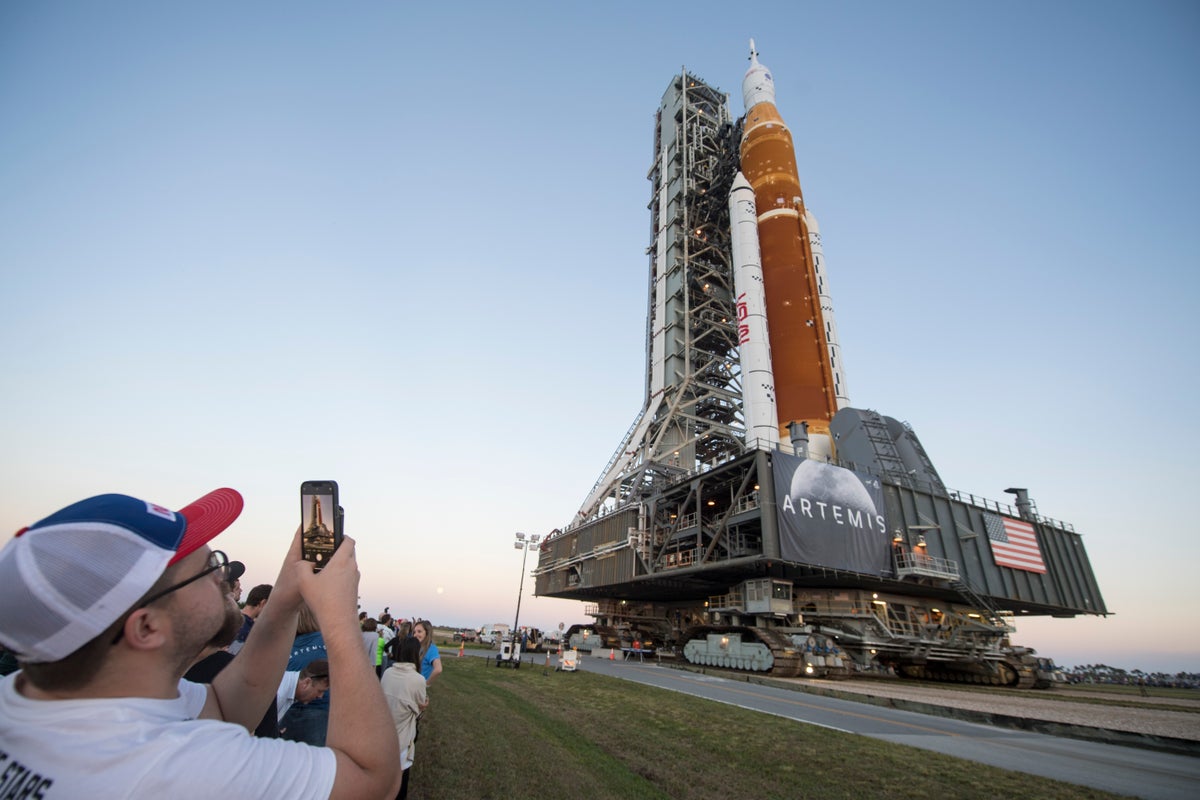
Nasa will roll its massive Moon rocket to the launch pad three days early, now targeting the evening of Tuesday 16 August to begin moving the giant launch vehicle out of the Vehicle Assembly Building at Kennedy Space Center in Florida.
Once Nasa’s Space Launch System (SLS) rocket is on the launch pad, preparations will begin for the first ever test flight of the big rocket currently scheduled for 8.33am EDT on 29 August. Nasa hopes that SLS, along with the Orion spacecraft it carries, will be the cornerstone of the space agency’s Artemis Moon program, which aims to return humans to the Moon by 2025.
Artemis I, as the test flight is called, will see an uncrewed Orion capsule to, around, and back from the Moon over 42 days. If that mission is successful, a human crew will conduct a similar lunar flyby in May 2024, while Artemis III, scheduled for 2025, will land humans on the lunar South Pole.
The 29 August launch and pre-launch activities will be carried live on Nasa TV, the Nasa app, and the space agency’s website. If Nasa has to scrub the launch, additional launch windows open on 2 and 5 September.
Originally intended to launch in 2017, the Artemis I test flight has faced multiple delays, most recently a series of failed cryogenic fueling tests where Nasa attempted to load SLS with cryogenic propellant. The space agency succeeded in its fourth test attempt on 22 June, but that test uncovered hydrogen leaks in the rocket that had to be repaired after the rocket rolled back inside the Vehicle Assembly Building on 2 July following the test.
Tuesday evening will be the first time SLS has left the Vehicle Assembly building since July. The roughly four-mile journey to Launch Complex 39B will take about 10 hours as Nasa’s treaded mobile crawler slowly carries the 5.75 million pound SLS rocket to the launch pad.
The SLS rocket will be the most powerful rocket to ever fly, standing 322 feet tall and generating 8.8 million pounds of thrust, 15% more than the Saturn V rocket that carried the Apollo astronauts to the Moon in the 1960s and 1970s.